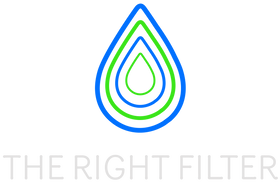While it might seem like a basic human right, getting clean water isn’t always easy. Luckily, science is stepping up with some pretty ingenious solutions.
First up, tea. Yes, tea. Northwestern University researchers discovered that brewing tea can naturally filter heavy metals like lead and cadmium out of water. The heavy metal ions stick to the surface of the tea leaves, trapping them until the used tea bag is tossed.
Now, before you start using tea bags as your new water filter, the researchers aren’t suggesting that. Their goal was to measure tea’s ability to adsorb heavy metals, and the results are promising. They also found that the type of tea bag matters—cellulose bags worked incredibly well, while cotton and nylon didn’t. So, next time you sip your tea, remember: it’s not just calming your nerves; it’s also trapping toxins.
Speaking of toxins, let’s talk about PFAS, the “forever chemicals” that seem to be everywhere. A team from the Institute of Science Tokyo has developed a carbon-based material that can remove PFAS from water using a method called membrane distillation (MD). By leveraging the difference in boiling points between water and PFAS, their system allows only water vapor to pass through, leaving PFAS behind.
The result? Water with PFAS levels so low they’re below global environmental standards. And the team isn’t stopping there—they’re working on a solar-powered version to make the system even more sustainable.
Meanwhile, Georgia Tech researchers are using machine learning to design better membranes for filtering PFAS. Traditional methods can take years of trial and error, but their ML model identified eight promising membrane candidates in just a few months. That’s 10 to 20 times faster than before. The key? Electrostatic interactions, size exclusion, and dehydration play critical roles in how PFAS molecules move through the membranes.
But PFAS aren’t the only challenge. Desalination—turning seawater into drinkable water—is another big one. Enter Devin Shaffer from the University of Houston, who developed a breakthrough membrane that lets water flow through up to eight times faster while still blocking salt. This could make desalination more efficient and accessible, addressing the global water scarcity crisis.
And if you thought that was cool, wait until you hear about oxygen-doped electrodes. Researchers have developed a seawater purification technique that outperforms even activated carbon. By using electrodes to remove ions from seawater, they can produce drinkable water while also extracting useful ions like sodium for industrial processes. The secret is oxygen doping, which increases the electrodes’ surface area and improves their efficiency.
But what if you don’t have access to seawater or fancy electrodes? That’s where food scraps come in. Researchers at the University of Texas at Austin have created a system that uses biomass-based hydrogels to pull drinkable water out of thin air. By combining natural materials like discarded food scraps and seashells with mild heat, they can harvest up to 14 liters (about 3 gallons) of clean water per kilogram of hydrogel daily—even in dry conditions.
This breakthrough opens up a whole new way to think about sustainable water collection, especially for households and small communities.
Clean water is a complex challenge, but science is tackling it from every angle. From tea bags that trap heavy metals to machine learning-designed membranes, from desalination breakthroughs to water-harvesting hydrogels, we’re making progress.
Articles Referenced
https://phys.org/news/2025-02-brewing-tea-toxic-heavy-metals.html
https://phys.org/news/2025-02-carbon-based-materials-hazardous-chemicals.html
https://techxplore.com/news/2025-02-machine-discovery-membranes-filter-pfas.html
https://phys.org/news/2025-02-accessible-membrane-filter-desalination-effectiveness.html
https://techxplore.com/news/2025-02-seawater-purification-technique-outperforms-commonly.html
https://phys.org/news/2025-02-scraps-biomass-based-hydrogel-thin.html
